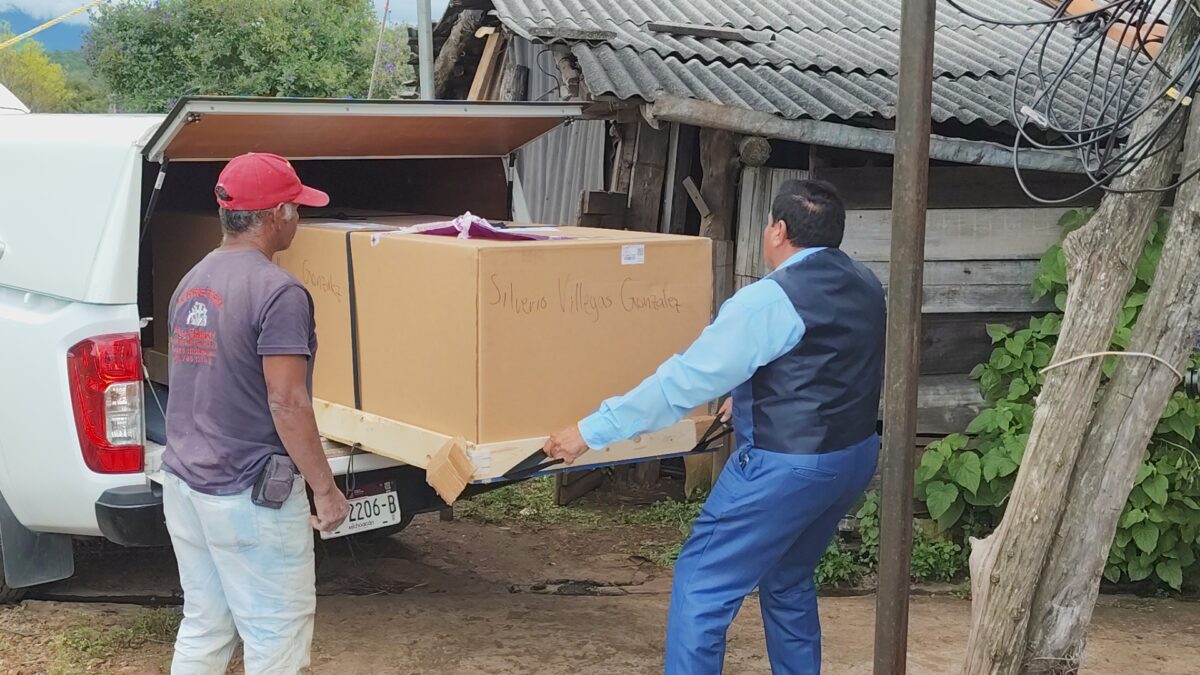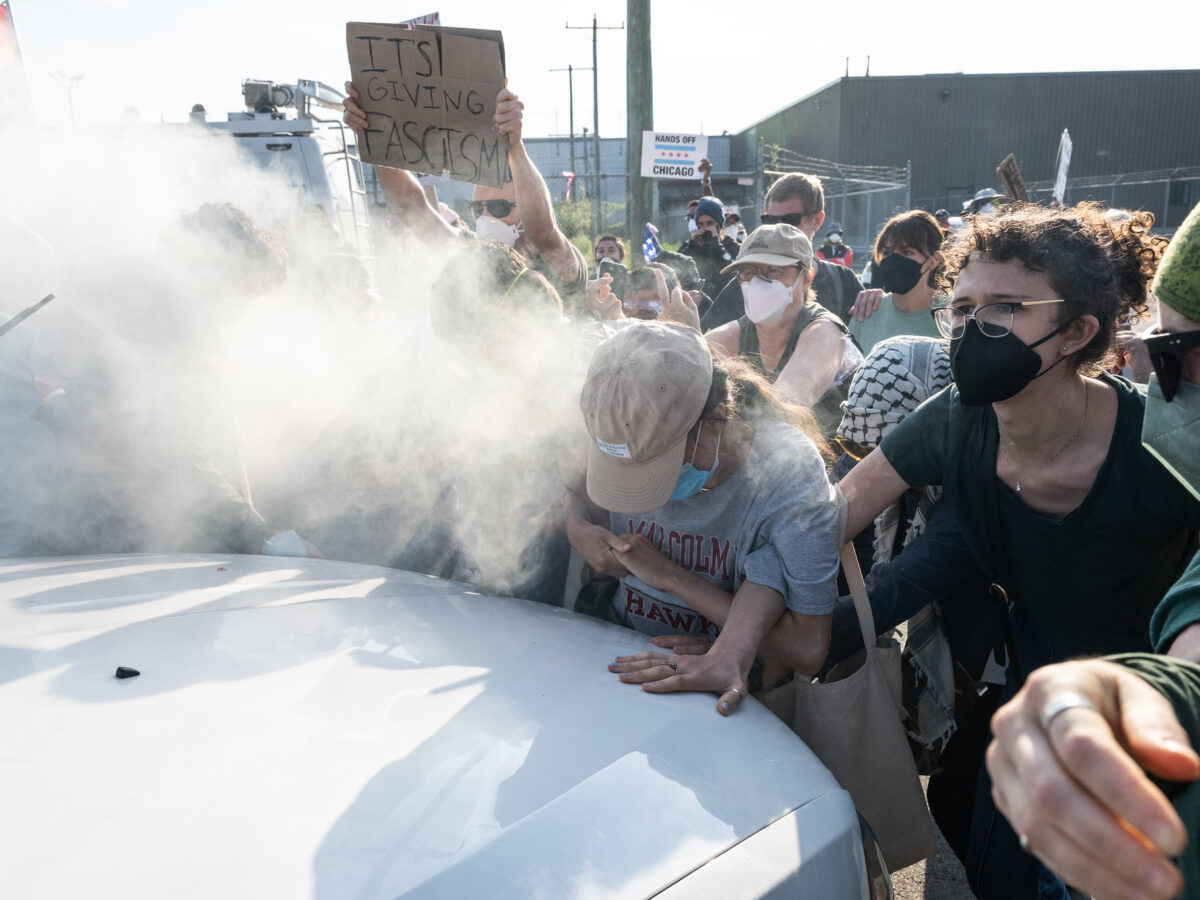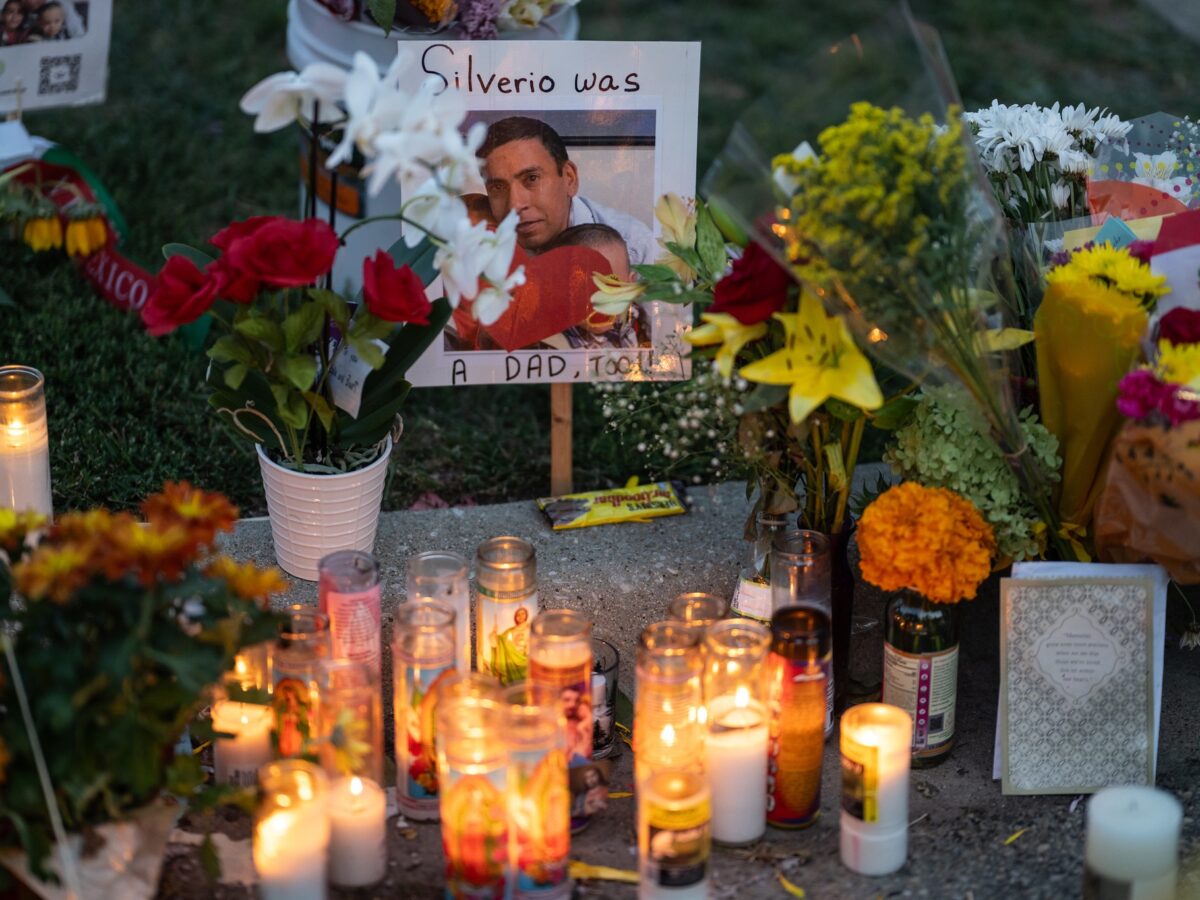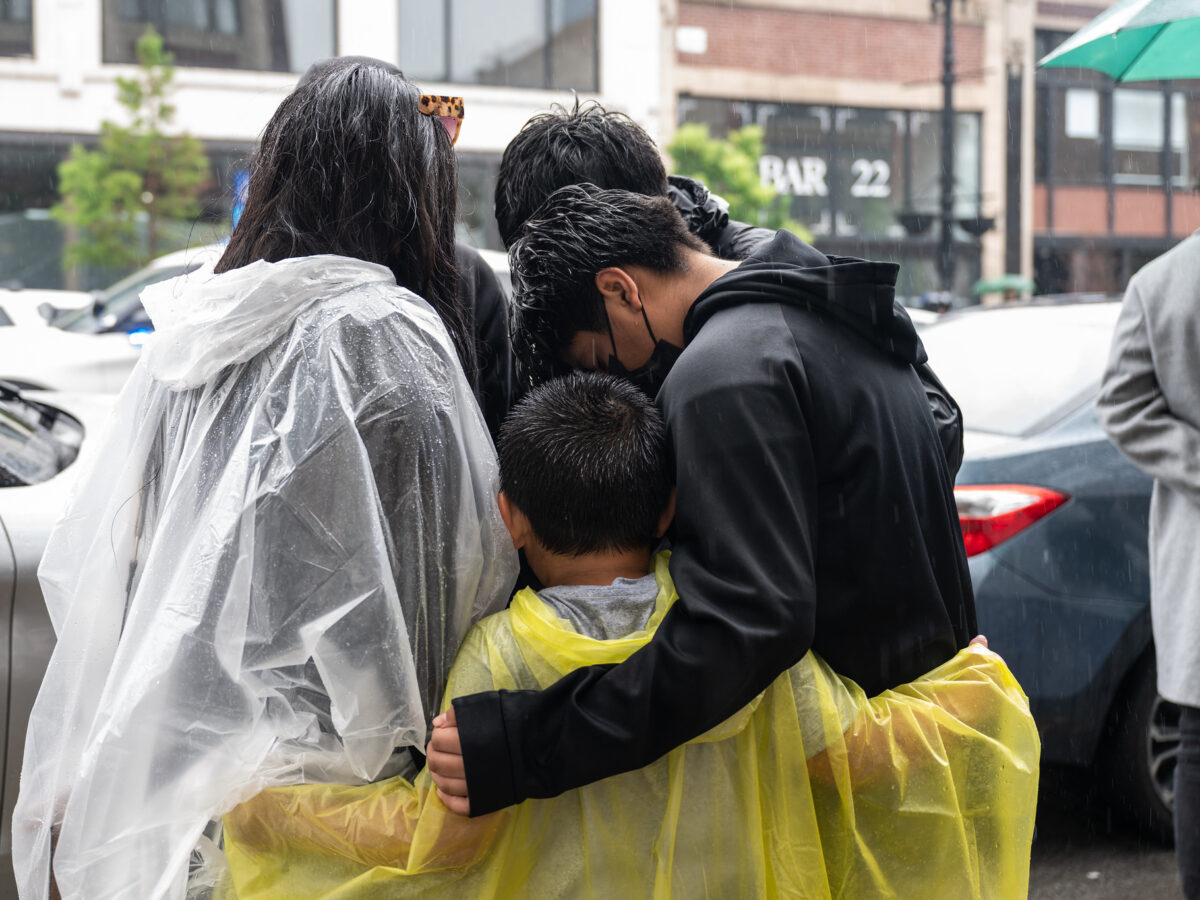H e came back in a box.
A wooden coffin wrapped in cardboard, the kind used to protect freight. Eighteen years after leaving, that was how Silverio Villegas González returned to Michoacán. The plane landed in Guadalajara; from there, the hearse drove ten hours through the hills until it reached Loma de Chupio, a rural community just outside the town center around 4:00pm on Thursday, September 26.

According to Michoacán-based reporter César Cabrera, who attended the funeral, the family held the wake inside the small wooden home where Villegas grew up—four rooms, a tin roof. About twenty people came the first night: brothers, nephews, neighbors. Behind Villegas González’s casket, large circular flower arrangements leaned against the wall—one filled with red and white roses, another with yellow lilies, white blooms, and green foliage. A gold-colored crucifix stood to the left of the coffin, reflecting the candlelight. The next day, the church in Irimbo was full.
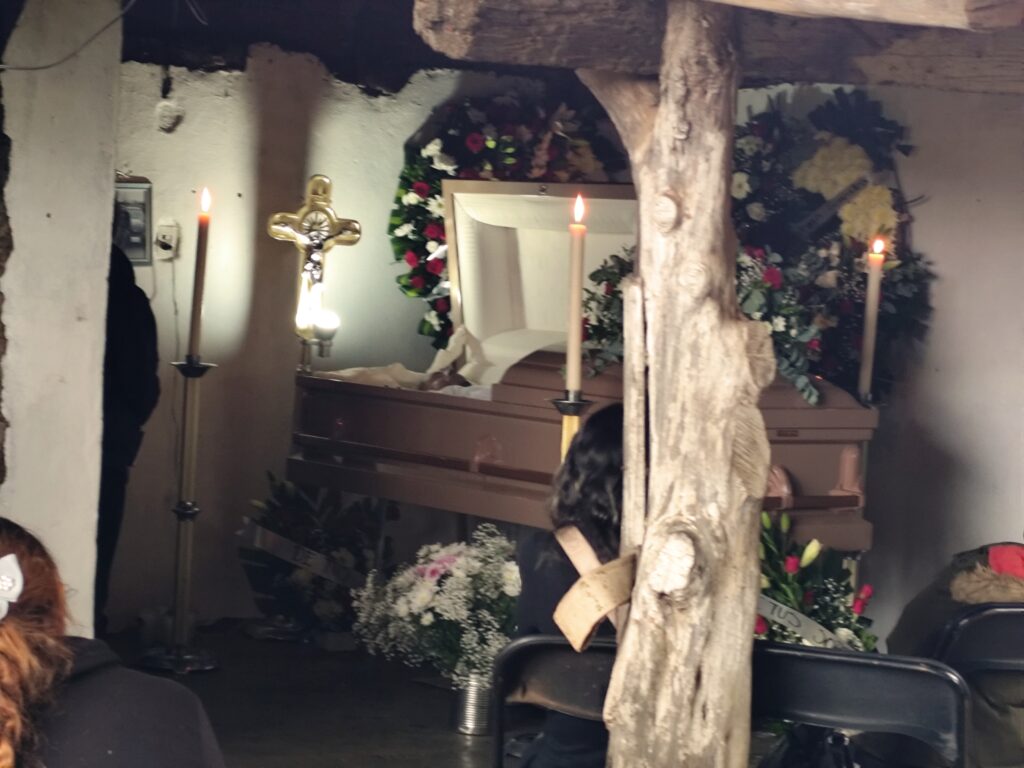
Federal immigration agents fatally shot Villegas González during a traffic stop in Franklin Park on the morning of September 12. The Department of Homeland Security (DHS) later claimed one agent was “seriously injured” after being dragged by Villegas González’s car as he tried to flee. Body-camera footage obtained by the Weekly shows one agent telling a Franklin Park police officer his injury was “nothing major,” however. Neither federal agent was wearing a body-camera at the time of the shooting.
The Mexican Consulate in Chicago paid for the flight. The state covered the transport from Guadalajara. The municipality paid for the burial.
Cabrera said Villegas González’ return to Michoacán was one among many. Each year, hundreds of bodies are flown back to Michoacán from U.S. cities like Chicago, Los Angeles, and Houston. In 2025, at fifty-eight remains of Michoacanos who died in the United States have been repatriated to the state. Some cases draw public attention, he said, but many others remain private at the families’ request.
In July, another man from Zinapécuaro—Jaime Alanis García, the first Michoacano to die during an ICE raid that year—fell from a greenhouse roof in California while trying to escape agents. His family, Cabrera said, was “very, very poor.”
The Consulate General of Mexico office in Chicago that serves Illinois and northern Indiana, and handled roughly 700 repatriations last year. Most involved deaths from illness, accidents, or natural causes.
“Sometimes relatives reach out to us, and sometimes we’re notified by local authorities or medical examiner’s offices,” said Saúl Juárez Montaño, Consul for Protection and Legal Affairs. Once contact is made, he explained, consular staff interview the family and conduct what they call a socioeconomic assessment to determine whether they qualify for financial assistance.
“In many cases, when people are undocumented and a family member dies in a way that involves the police or an investigation, they’re afraid to contact the authorities and try to get an answer of what happened,” said Javier Cerritos De Los Santos, also a Consul for Protection and Legal Affairs.
“When a case involves an officer of the law, the Mexican Consulate, as it has done in the past, would request a full investigation of what really happened, so the family can be totally sure what happened. And if there’s anything else that should be done regarding this type of situation,” he said.
The consulate also maintains “a list of funeral homes that we’ve worked with throughout the years—ones that know how to do this process correctly,” Cerritos De Los Santos said. Those funeral homes handle the embalming, the apostille of the death certificate, and the certification required for a body to cross the border. Once everything is in order, the consulate issues “the visa for the remains so that the body can enter Mexico.”
Juárez Montaño said the office works as quickly as possible once documentation is complete. “Families in Mexico are used to, if somebody dies, you’re already at night at the funeral. We say, ‘velando al difunto esa misma noche,’ right? And the next day, we’re already taking them to the cemetery and burying them. That’s the Mexican tradition,” he said.
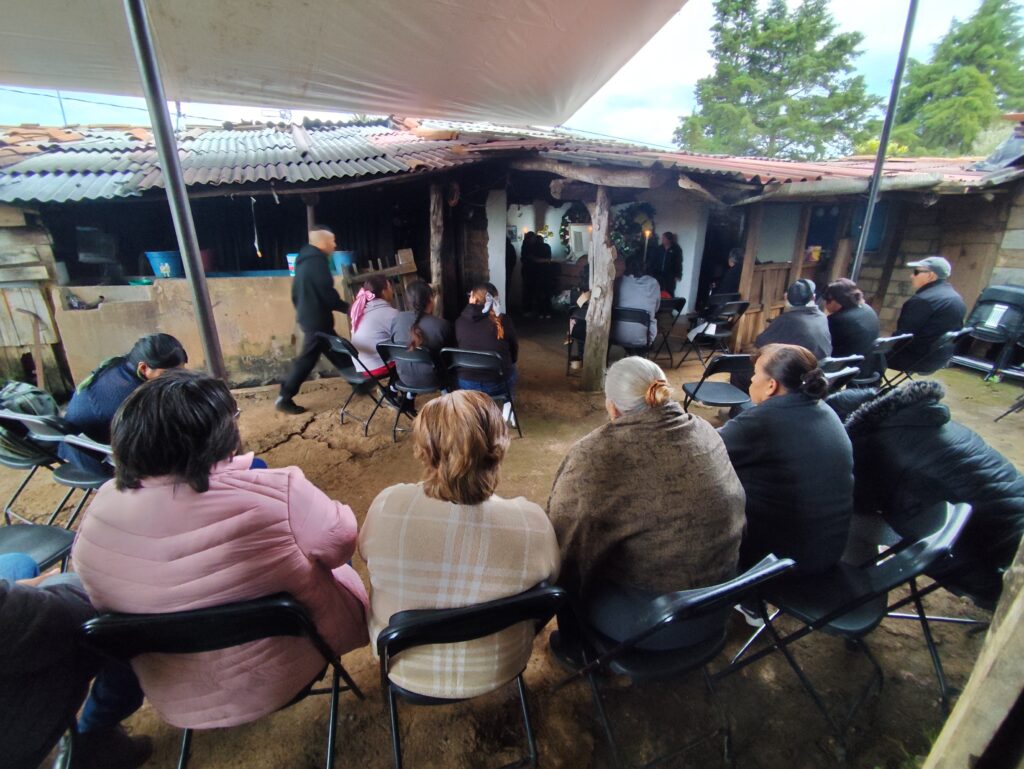
“But when that happens here, we have to explain to the family that here, especially a family in Mexico, that in the U.S. it’s totally different. The body could take a week or two in the morgue, then the funeral home has to pick up the body, get the certificate, then get the other documentation that they have to bring to us, and we have to issue the visa for the body to travel to Mexico.”
When Villegas González’ coffin arrived in Loma de Chupio, his mother, who was waiting for its arrival, was inconsolable, Cabrera said. Two of his brothers coordinated the wake inside the family’s small wooden home.
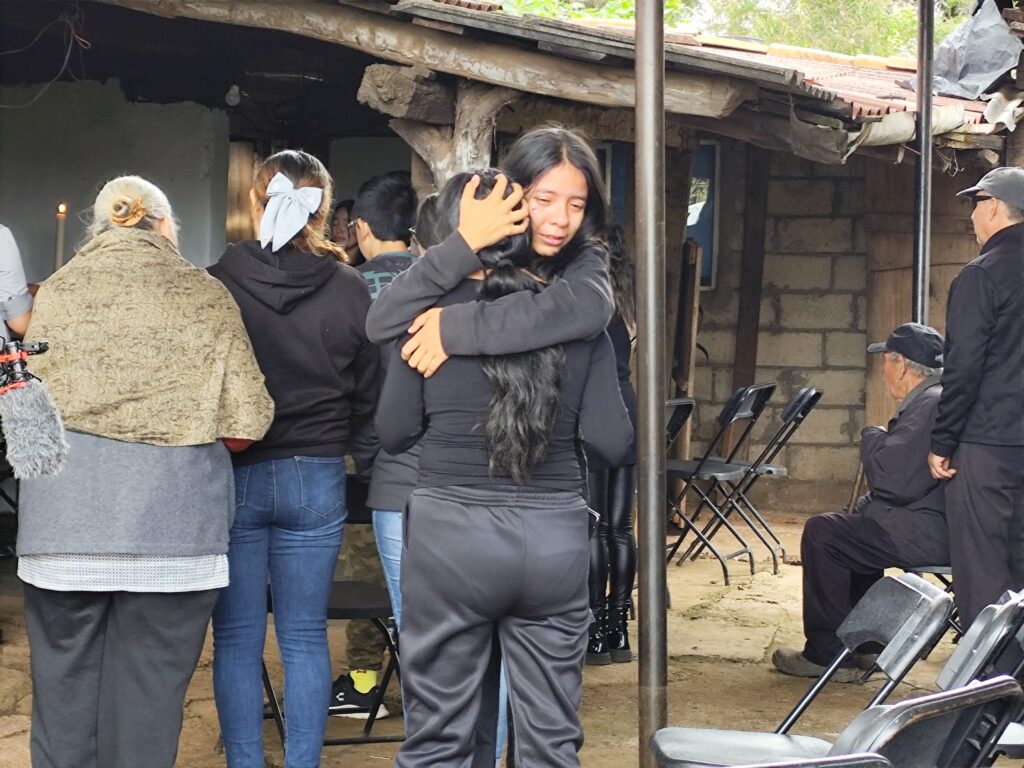
Villegas González’ brother Jorge Villegas González described him as the kind of man who avoided confrontation. “My brother was a calm person, quiet,” he said. “He was very loving with his children, he was everything to them.”
Jorge added that the family was devastated because of how Villegas González was killed. The family is calling on both the Mexican and U.S. governments for answers. They plan to take legal action against the U.S. government once the mourning period passes. “We want help so this can be clarified,” Jorge said. “If the officer was trained to kill unarmed people, that cannot be called justice.”
The town of Irimbo “is small, a place with a high level of poverty,” Cabrera said. According to 2022 data from INEGI, Mexico’s national statistics agency, about half of its residents live in poverty, and nearly twelve percent in extreme poverty.
“Silverio’s house is made of wooden poles,” Cabrera said. “The roof is tin. It’s four rooms at most; four by four, and they have a little cornfield, but unfortunately that’s not enough to get by.”
He described the region as one where migration has become a kind of routine. “It’s a natural phenomenon because of poverty, because of violence,” he said. “That’s why so many people leave.”
Cabrera noted that even after eighteen years in the United States, Silverio’s family’s financial situation had not changed. “Just because you go there doesn’t mean things will go well overnight,” he said. “People there have families too—they have expenses—and the conditions under which they’re hired have a lot to do with it.”
In Michoacán, Cabrera has covered many cases like Silverio’s—migrants who leave searching for stability and return years later in wooden boxes. “It’s necessity that pushes them,” he said. “It’s the last resort they have.”
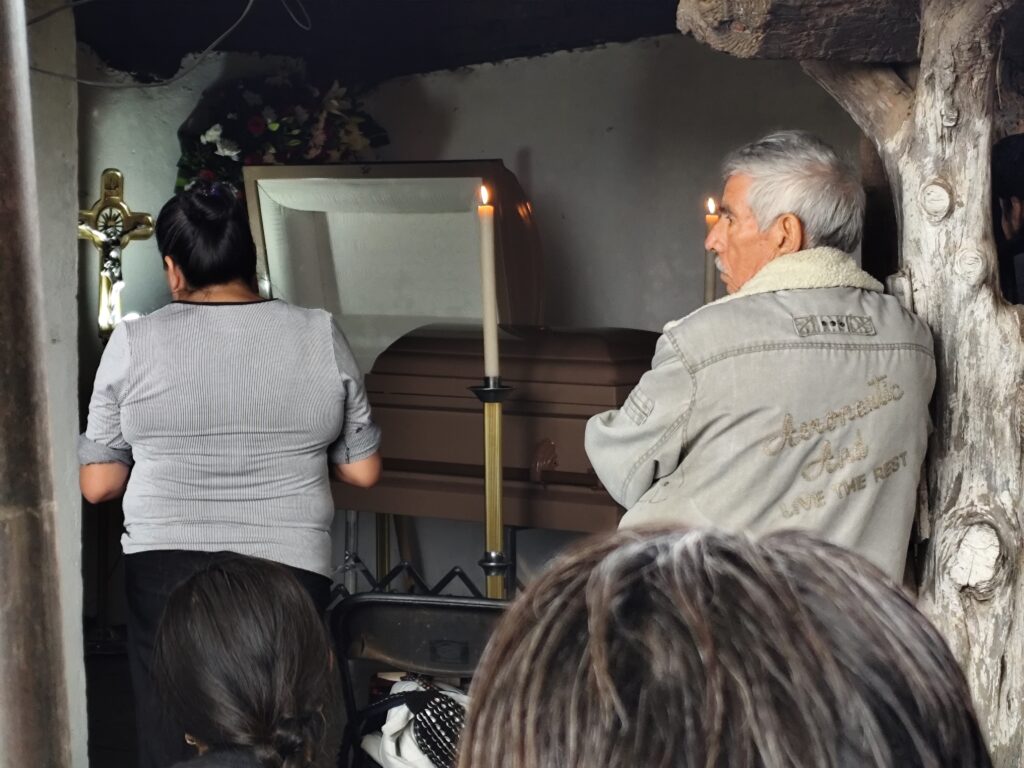
After Villegas González’ death, his girlfriend of nearly two years, Blanca Mora, couldn’t bring herself to return to work. She’d been cleaning houses and offices, but her employer noticed how shaken she was and told her to take time off. Then, he replaced her.
In her first interview since Villegas González’ death, Mora told the Weekly that she spent three days in the hospital being treated for symptoms related to stress, panic, and anxiety brought on by trauma and grief.
“The doctors told me, ‘Right now you’re going to be like a baby. You have to learn to crawl and come back,’” she said.
Without steady income, rent became impossible to cover, she said. A local group, PASO West Suburban Action Project gave her a $500 check that helped her stay afloat for another month.
“As soon as we got word that there was ICE activity in Franklin Park, we mobilized immediately,” said Ana Torres, an organizer and communications lead with PASO.
The apartment in Franklin Park no longer felt livable, according to Mora. Her thirteen-year-old daughter couldn’t sleep there because the home reminded her of what had happened to Villegas. “It affected her to be there,” Mora said. So they packed their things, most of which are now stored in a friend’s garage, and moved into a small room in Berwyn.
“We stayed in communication with her and her family,” Torres said. “They even came to an event we held one month after Silverio’s death to honor his life and demand safer communities.”
That event took place at Gouin Park in Franklin Park, where local residents gathered to remember Villegas González and denounce what Torres called “an unnecessary and cruel killing.” For PASO, she said, the work goes beyond offering aid after a tragedy—it’s about making sure communities know their rights when ICE comes. “We continue to say it clearly,” Torres said. “ICE is not welcome in our neighborhoods. They create insecurity, not safety.”
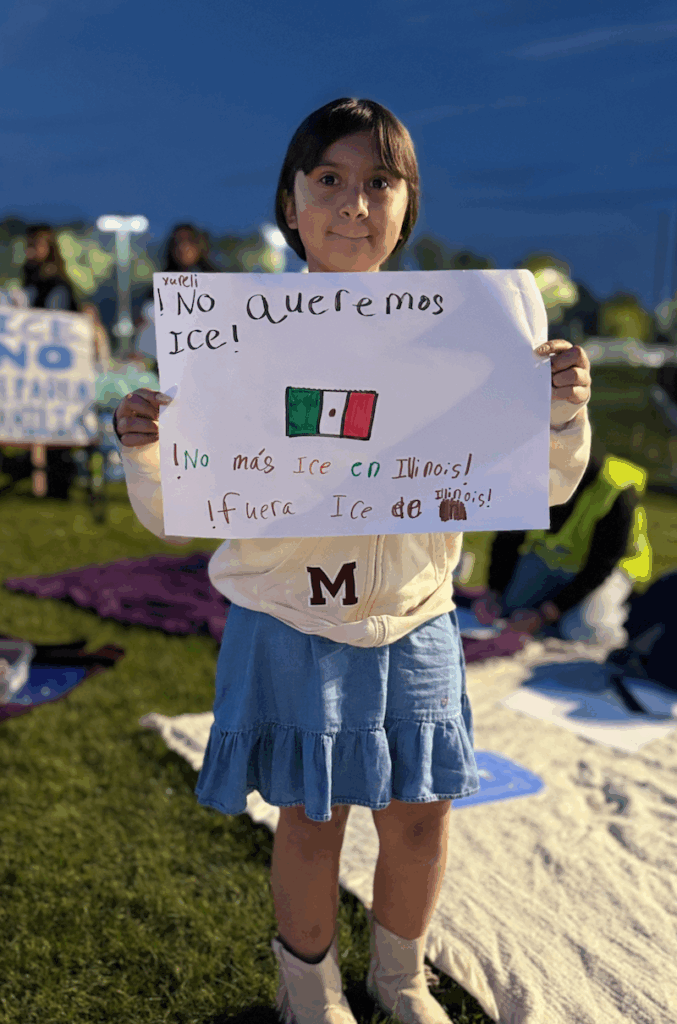
Villegas González and Mora lived together in Franklin Park for about eight months before the killing. They were looking forward to celebrating their two-year anniversary together on October 10.
Most mornings were the same: he’d wake her before work with “levántate, chiquita” (“get up, little one”). He’d help get the kids dressed, make sure everyone ate something— yogurt, a piece of fruit, a glass of milk.
“He was always attentive,” Mora said. When she had a migraine, he’d tell her to rest and would take the children from school. Villega González’ two sons, ages three and seven, lived with them, along with Mora’s daughter. They called her mamá de arroz—rice mom—a nickname that started as a joke and stuck.
Most days, they talked about finding a bigger apartment, maybe renting a house when her daughter finished middle school.
The morning of September 12, Mora hurried to get ready. She was running late, worried about traffic. Villegas González stopped her at the door, asking for a moment, to give him a hug. His daughter joined in and kissed him on the forehead.
After dropping off her daughter at school, Mora returned home to change for work. Around that time, Villegas González usually called after leaving his children at school and heading to his job, a small check-in they shared every morning. When the call didn’t come, she began to worry.
She called his boss, who said he hadn’t shown up for work. She called his sister and the woman who watched the kids. No one had heard from him.
Then she opened Facebook.
“I went on Facebook and saw the video,” Mora said. “I said, okay, it was an accident, a crash… but he’s fine, from what it looks like.”
She kept watching.
“Then I saw they were hitting him,” she said. “You can hear them yelling at him, and I thought, they’re going to take him to the hospital, they’re going to take care of him.”
A few minutes later she refreshed her page. “That’s when I saw they announced he’d died,” she said.
“I couldn’t believe it. I thought, maybe it’s a mistake, maybe they confused him with someone else. I was just asking God that they’d made a mistake.”
Because the couple wasn’t married, Mora wasn’t part of the repatriation of Villegas González’ body. After federal agents killed him, his family in Mexico became the official points of contact with the Mexican Consulate, which requires next-of-kin authorization for repatriation.
Mora had lived with Villegas González, raised children alongside him, and shared a life, yet she was treated as an outsider.
“I wanted them to let me say goodbye to him the way I should have,” Blanca said. “He was my partner.”
Alma Campos is the Weekly’s immigration reporter and project editor.

